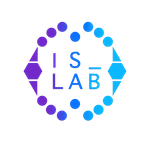Liu, Bin, Pliakos, Konstantinos, Vens, Celine, and Tsoumakas, Grigorios "Drug-target interaction prediction via an ensemble of weighted nearest neighbors with interaction recovery." Applied Intelligence (2021): 1-23.
Author(s): Bin Liu, Konstantinos Pliakos, Celine Vens and Grigorios Tsoumakas
Appeared In: Applied Intelligence
Keywords: Drug-Target Interaction, Ensemble, Interaction Recovery
Tags:
Abstract: Predicting drug-target interactions (DTI) via reliable computational methods is an effective and efficient way to mitigate the enormous costs and time of the drug discovery process. Structure-based drug similarities and sequence-based target protein similarities are the commonly used information for DTI prediction. Among numerous computational methods, neighborhood-based chemogenomic approaches that leverage drug and target similarities to perform predictions directly are simple but promising ones. However, existing similarity-based methods need to be re-trained to predict interactions for any new drugs or targets and cannot directly perform predictions for both new drugs, new targets, and new drug-target pairs. Furthermore, a large amount of missing (undetected) interactions in current DTI datasets hinders most DTI prediction methods. To address these issues, we propose a new method denoted as Weighted k-Nearest Neighbor with Interaction Recovery (WkNNIR). Not only can WkNNIR estimate interactions of any new drugs and/or new targets without any need of re-training, but it can also recover missing interactions (false negatives). In addition, WkNNIR exploits local imbalance to promote the influence of more reliable similarities on the interaction recovery and prediction processes. We also propose a series of ensemble methods that employ diverse sampling strategies and could be coupled with WkNNIR as well as any other DTI prediction method to improve performance. Experimental results over five benchmark datasets demonstrate the effectiveness of our approaches in predicting drug-target interactions. Lastly, we confirm the practical prediction ability of proposed methods to discover reliable interactions that were not reported in the original benchmark datasets.
